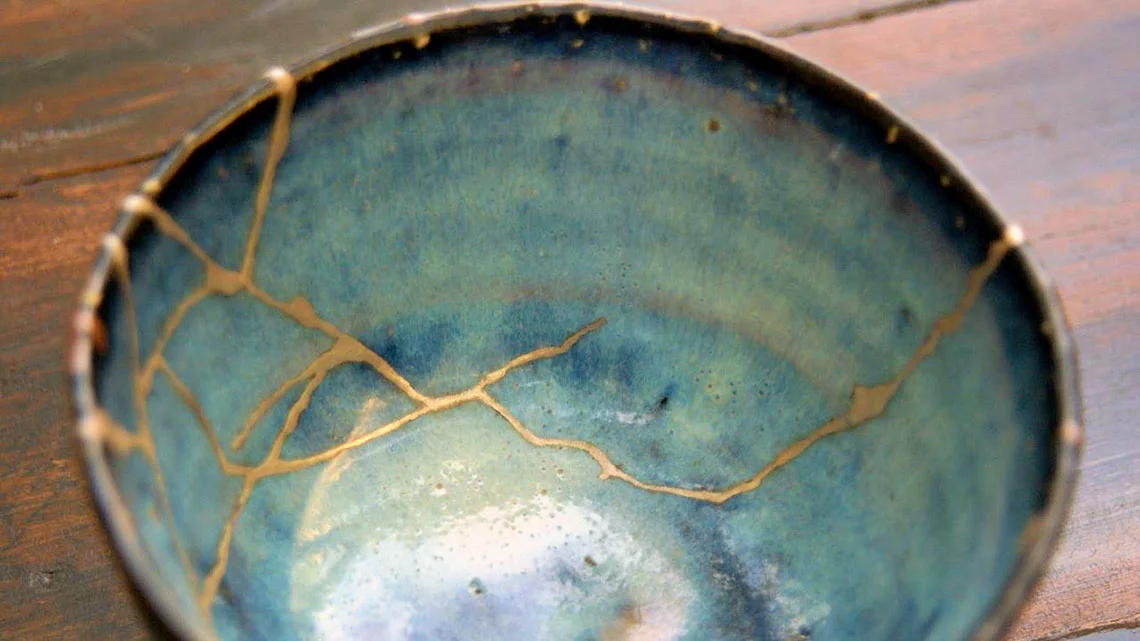“The wound is the place where the light enters you.”
Several years ago I came across an intriguing art form, that holds tremendous insights.
Kintsugi, or Kintsukuroi, is the centuries-old Japanese art of fixing broken pottery. This article goes into the history of Kintsugi:
The name poetically translates to, “golden joinery.” Rather than rejoin ceramic pieces with a camouflaged adhesive, the Kintsugi technique employs a special tree sap lacquer dusted with powdered gold, silver, or platinum. Once completed, beautiful seams of gold glint in the conspicuous cracks of ceramic wares, giving a one-of-a-kind appearance to each “repaired” piece.
While its origins aren't entirely clear, historians believe that it dates back to the late 15th century. According to legend, the craft commenced when a Japanese shogun sent a cracked chawan—or tea bowl—back to China to undergo repairs. Upon its return, the shogun was displeased to find that it had been mended with unsightly metal staples. This motivated contemporary craftsmen to find an alternative, aesthetically pleasing method of repair, and Kintsugi was born. By the 17th century, Kintsugi has become common practice in Japan. It was during this time that a Japanese warrior infamously purchased, broke, and repaired standard tea bowls in order to make a profit.
In addition to the aesthetic principle, Kintsugi has long represented prevalent philosophical ideas. Namely, the practice is related to the Japanese philosophy of wabi-sabi, which calls for seeing beauty in the flawed or imperfect. The repair method was also born from the Japanese feeling of mottainai, which expresses regret when something is wasted, as well as mushin, the acceptance of change.
“The world breaks everyone, and afterward, many are strong at the broken places.”
Given the fractured nature of each and every one of us, these ideas hold great truth and hope. Quite simply, we are not our cracks, our flaws. They don’t define and encapsulate us. That said, a great many people spend their lifetime trying to hide their cracks. Wanting others to see them as all put together. The alternative option is to embrace our imperfections and places of fracture from our life. To see an opportunity for mending, growth, and beautification. Whether or not we are open to the process of rejoining these parts of ourself, and journeying toward wholeness, is up to us.
““Our life is full of brokenness - broken relationships, broken promises, broken expectations. How can we live that brokenness without becoming bitter and resentful except by returning again and again to God’s faithful presence in our lives? Without this ‘place’ of return, our journey easily leads us to darkness and despair. But with this safe and solid home, we can keep renewing our faith, and keep trusting that the many setbacks of life move us forward to an always greater bond with the God of the covenant.””
“For a seed to achieve its greatest expression, it must come completely undone. The shell cracks, its insides come out and everything changes. To someone who doesn’t understand growth, it would look like complete destruction.”



